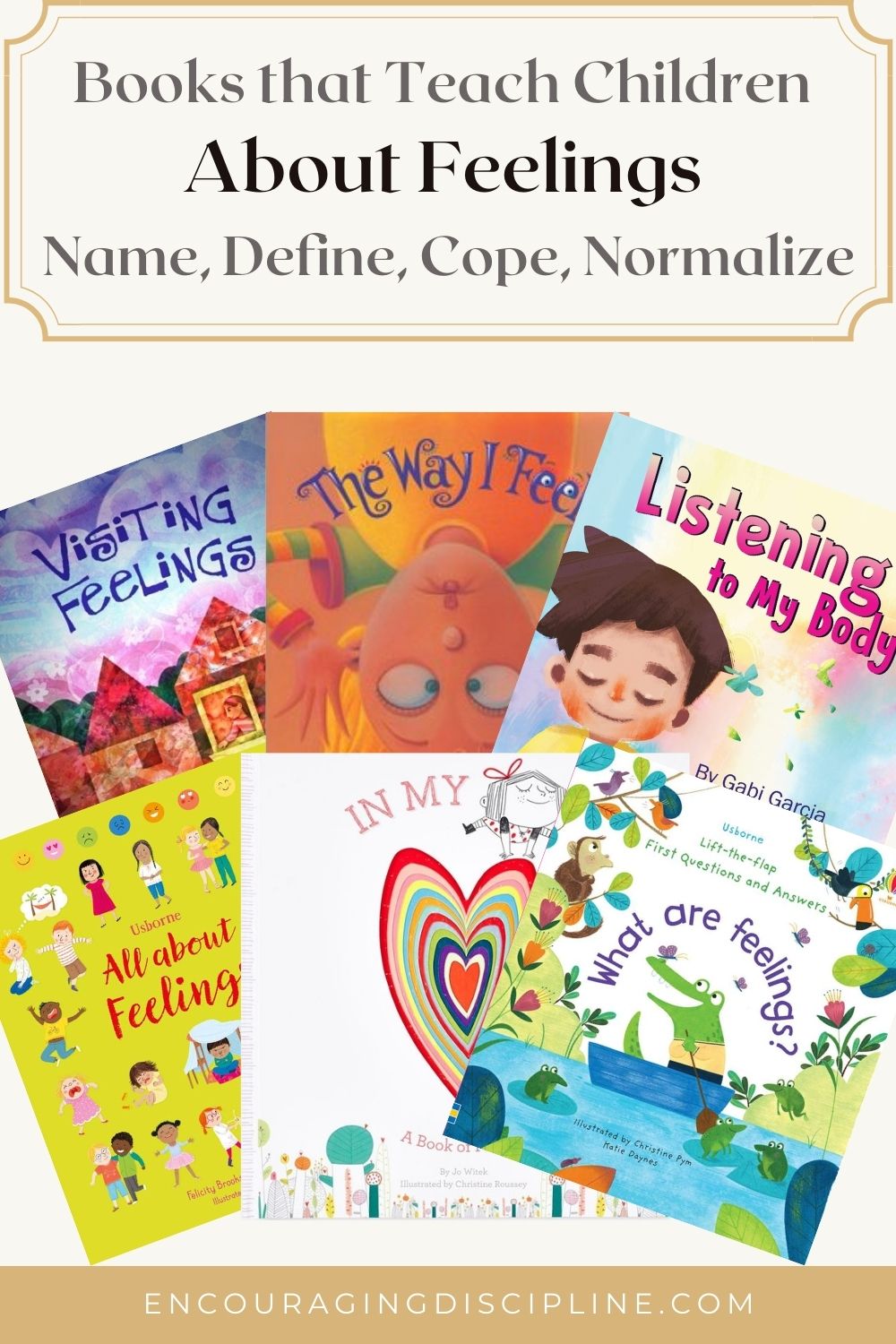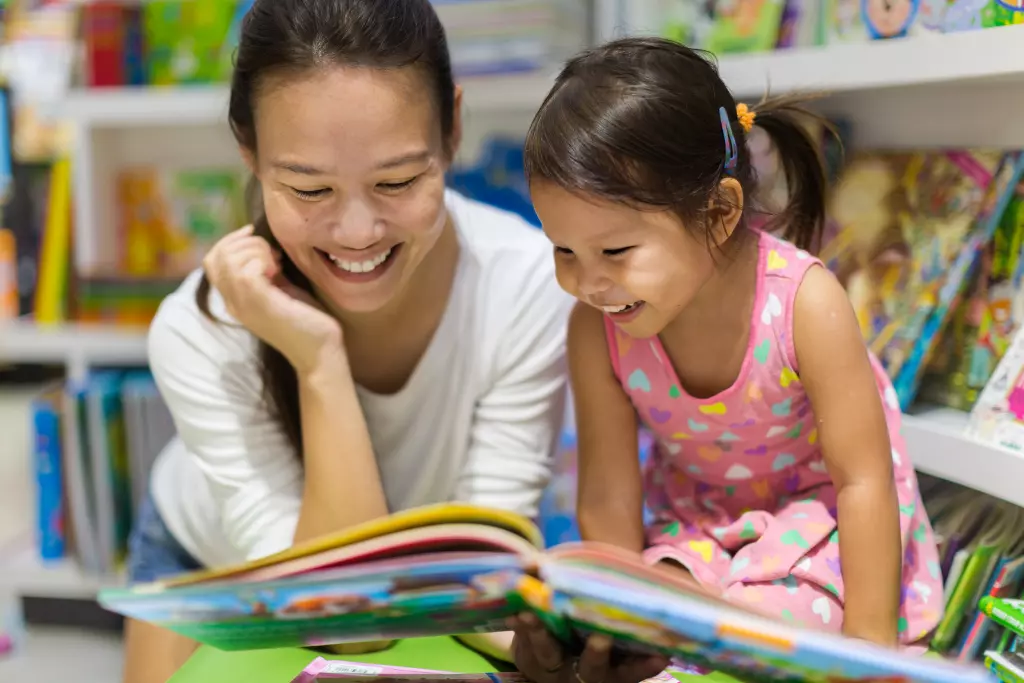Books That Teach Children About Feelings
Teaching children about feelings can be tricky. Sometimes even we, adults, can’t identify our feelings. Yet we know that identifying them is so important when trying to contain them. Dr. Dan Siegel and Dr. Tina Payne Bryson talked about the very effective “name it to tame it” strategy to calm emotions in their book The Whole-Brain Child. But before we get to name our feelings, we have to be able to sense them in our bodies. And the books that I have selected here help with learning how to sense and name feelings.
Here are some great books that teach children about feelings. They not only teach children the names of different feelings and how to recognize them, but they also normalize the feelings.
I stay away from books that portray feelings as good and bad, desirable and undesirable. Feelings come in all sorts of forms for us humans. Children need to know it is perfectly human and normal for them to have a wide array of feelings. They also need to know that we accept and love them with all their feelings.
[Disclosure: This post contains affiliate links, which means I earn a small commission, at no extra cost to you, if you make a purchase using the links below. Please read my affiliate disclaimer for more information. Your purchase using the links below supports the creation of new content on this website.]
Related: Children’s Books That Teach Mindfulness and Yoga
Table of Contents
Books That Name, Define, and Normalize Feelings
The first step in regulating our own emotions is naming them. These books do an amazing job of naming a multitude of emotions. They tell children what they are, how they feel in their bodies, and what to do about them.
Additionally and importantly, they make sure to emphasize that all humans experience these emotions and they are nothing to fear, but rather a source of information and well-being.
As you read these books with your child, ask them if they can think of a time when they’ve had the feelings described in the book. Have them recount what happened, and how they felt, then notice how the feelings eventually went away. Ask your child how they felt afterward, once that feeling was gone. To increase awareness of their own body, ask your child if they agree with the book on how the feeling was present in their body. Ask them to describe the feeling in their own words.
Having these types of conversations will help your child to internalize the fact that feelings come and go (even happiness) and that the underlying state that we have is a neutral one, of calm.
All About Feelings, by Felicity Brooks and Frankie Allen, from Usborne
This is my favorite book about feelings. All About Feelings explicitly teaches children about different feelings and messages sent by our body through sensations. It describes a few feelings and shows why we have them. It has a cool path spread on two pages, that shows how feelings change throughout the day. The children are invited to guess how the character is feeling in each picture as she goes through her day. The book also addresses the fact that sometimes we may have feelings that are “jumbled up” and confusing.
Finally, it teaches some calm-down strategies, looking for how other people are feeling and helping them out, and showing kindness to oneself. This is a longer book, so I recommend reading it in several sittings. Children will enjoy the multitude of colorful pictures that accompany the text.
The Way I Feel, by Janan Cain
In The Way I Feel, the author goes over many feelings, not just happy, sad, or angry. There is a good variety: jealous, thankful, shy, bored, and so on. Each feeling is named and then it has a short description of how it feels in the body and what the child might be thinking or feeling like doing. I really like the end of the book which shows how natural it is to have all kinds of feelings and how they don’t make us a good or bad person.
“Feelings come and feelings go, I never know what they’ll be. Silly or angry, happy or sad – They’re all a part of me!”
Visiting Feelings, by Lauren Rubenstein
Visiting Feelings begins by inviting children to welcome feelings that come to visit and look at them “with wide-open eyes”. Here again, the feelings are not judged, they are looked at with curiosity. It shows how we can describe feelings in terms of shape, color, and size in our body – a great mindfulness exercise. The book then invites us to locate where in the body the feelings settled. And finally to listen to see what they are trying to say to us: “Treat your feelings like friends, talking to you.”
In My Heart, a Book of Feelings, by Jo Witek
In My Heart is a beautiful, tactile book. The heart in the book is cut out, so it is fun for kids to look at and touch. The text is simple and the pictures can be funny. It describes different feelings in terms of how they feel in the body, what they look like, and what they compare to. It ends by asking the reader, “Today my heart feels proud. How does your heart feel?”
Listening to My Body, by Gabi Garcia
Feelings are nothing but sensations in the body and Listening to My Body teaches children to understand them. It explains that our body communicates to us that it needs food, or that it is too hot or too cold. In the same way, it tells us how it feels about what happens throughout the day. And we should pay attention to what our body is trying to tell us so that we do not become overwhelmed by all these sensations.
This is a very encouraging book. It also gives a lot of words for children to learn to describe the sensations in their bodies. At the end of the book, there are activities that help us to feel better and calmer. On the author’s website, there are free downloadable resources to accompany the book.
Grumpy Monkey, by Suzanne Lang
In Grumpy Monkey, Jim, the monkey, wakes up grumpy. All his animal friends are trying to convince him to be happy and enjoy the beautiful day. They even suggest all kinds of things he could do to cheer himself up. But nothing helps.
Eventually, Jim learns that some days it’s ok to just be with whatever feeling we have. And it may help to talk about it with someone.
I love this book for its simplicity and also for the very clear and straightforward message. Feelings come and go and we can allow ourselves to feel whatever we are feeling, without trying to send the feeling away. And, of course, talking about how we are feeling and being with someone we love and trust are good ways to get through moments of tough feelings.
My children laugh out loud at the funny scenes and ask me to read this book to them over and over again.
The Rabbit Listened, by Cori Doerrfeld
I am in love with this book! The Rabbit Listened speaks to the importance of not rushing kids through emotions by employing all kinds of calming strategies or techniques. So often we try to help kids “feel better” when they are upset, but all they need is a listening ear.
In this book, a child builds the most amazing tower out of blocks. But all of a sudden, the tower collapses and he is devastated.
All his animal friends come by and try to help him feel better by inviting him to talk about his feelings, naming his feelings, telling him to roar about it or to try to build the tower back exactly how it was, try to laugh about it, or even knock someone else’s tower down. But the child doesn’t feel like doing any of these things.
The rabbit is the only one who comes and sits close by in silence. And this of course helps the child move through all the feelings he is feeling, and he is then able to talk about it, shout about it, laugh about it, and so on until he feels all calm again.
This is such a wonderful reminder for us parents to just be patient and allow our children to sit with their feelings, in our loving presence, because they will pass and things will feel better again.
The book also communicates to the children that feelings are safe to sit with, and it’s okay to not know immediately what they’re feeling.
Final Thoughts
New books that teach children about feelings come out every day. Here I wrote about a few of my very favorites.
If there is one thing you walk away with from this article is to be very cognizant about not judging feelings as good or bad. If we want our children to accept themselves and others fully, then this is an important factor. Even if you do find books that tend to portray feelings negatively, you can point it out to your child and talk about it. Feelings are part of the human experience and we can just let them be.

If you found this post useful, please share it with your friends and family.




